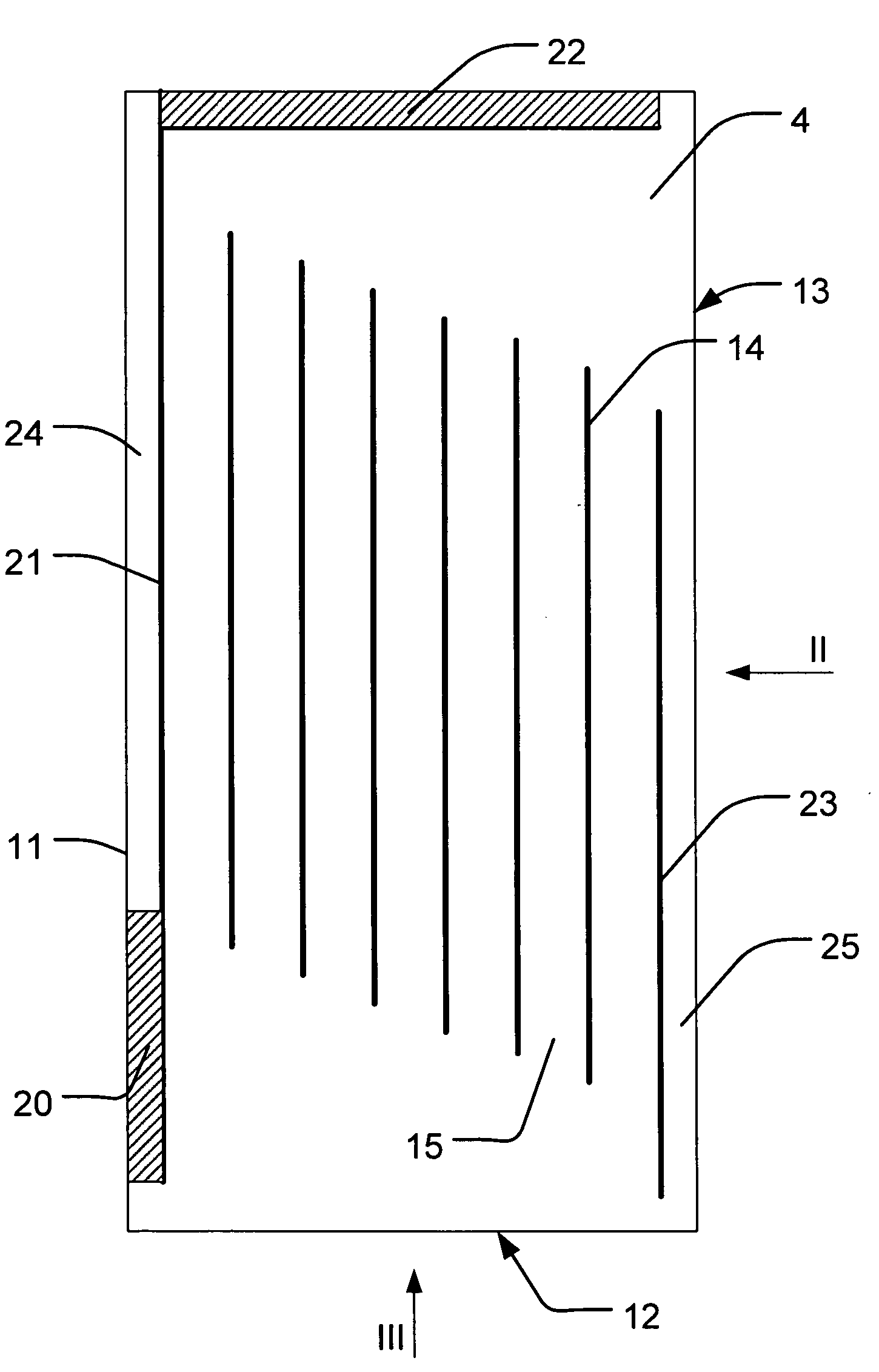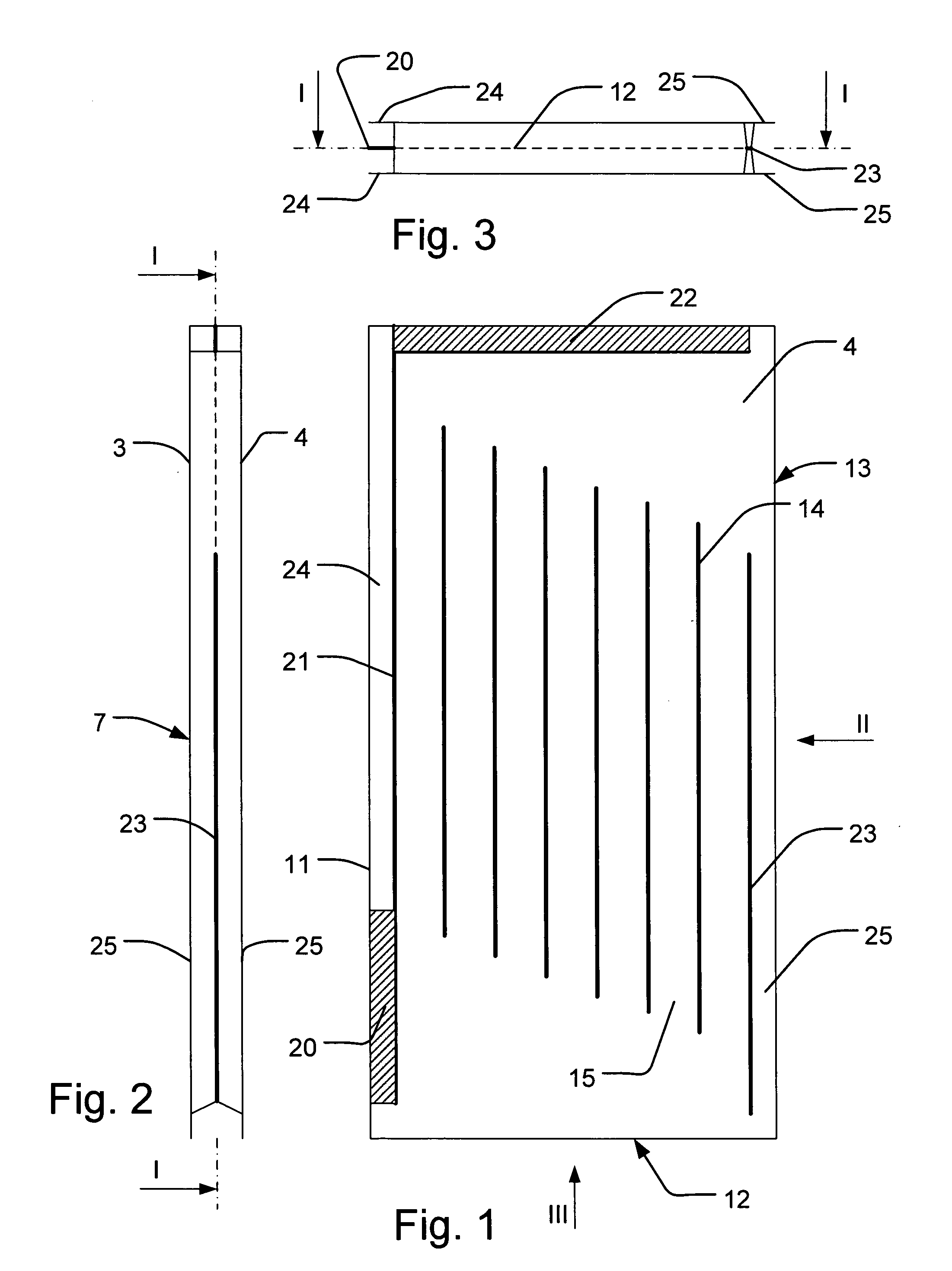Method for manufacturing a heat exchanger
a heat exchanger and manufacturing method technology, applied in indirect heat exchangers, lighting and heating apparatuses, laminated elements, etc., can solve the problems of increased fluid flow, increased energy needed to circulate fluid, and increased risk of system malfunction, so as to reduce the risk of edges deteriorating by melting during welding and achieve the effect of very efficient welding operation
- Summary
- Abstract
- Description
- Claims
- Application Information
AI Technical Summary
Benefits of technology
Problems solved by technology
Method used
Image
Examples
Embodiment Construction
[0067]FIG. 7 shows a production line 1 for manufacturing of a heat exchanger plate 7 from plastic material according to the invention. An upper and a lower sheet element 3, 4 of plastic material are fed to the production line. The plastic material is fed from two coils 2 to make for a simple but automated feeding. The feeding can also be done as single sheets. Furthermore, the sheets can advantageously be fed in two layers to a not shown conveyor belt to prepare in an advantageous way for succeeding shaping. A further advantage of feeding two layers of sheets from two coils is that it can happen automatically. Additionally, feeding the material this way can be done at very high speed.
[0068]The fed sheet elements 3, 4 are subsequently heated to a forming temperature in a heating station 5 of the production line 1. The heating is preferably done in a heating means through which the sheets are moved by a not shown conveyor belt. Heating the sheets elements can also be done by rolling t...
PUM
| Property | Measurement | Unit |
|---|---|---|
| pressure | aaaaa | aaaaa |
| length | aaaaa | aaaaa |
| lengths | aaaaa | aaaaa |
Abstract
Description
Claims
Application Information
 Login to View More
Login to View More - R&D
- Intellectual Property
- Life Sciences
- Materials
- Tech Scout
- Unparalleled Data Quality
- Higher Quality Content
- 60% Fewer Hallucinations
Browse by: Latest US Patents, China's latest patents, Technical Efficacy Thesaurus, Application Domain, Technology Topic, Popular Technical Reports.
© 2025 PatSnap. All rights reserved.Legal|Privacy policy|Modern Slavery Act Transparency Statement|Sitemap|About US| Contact US: help@patsnap.com



